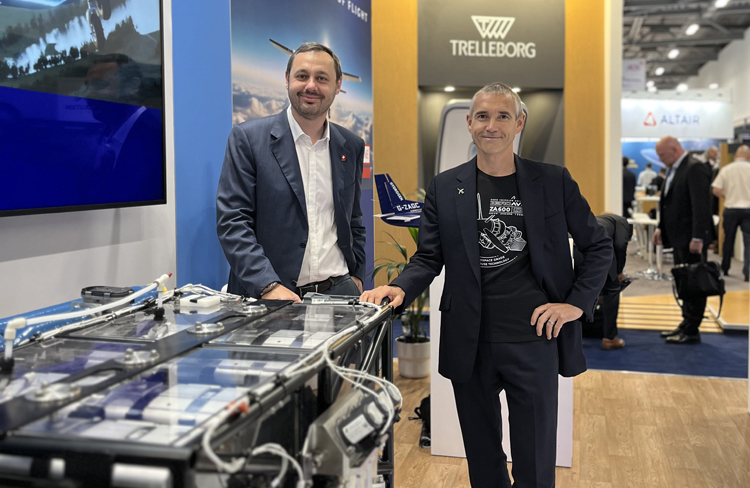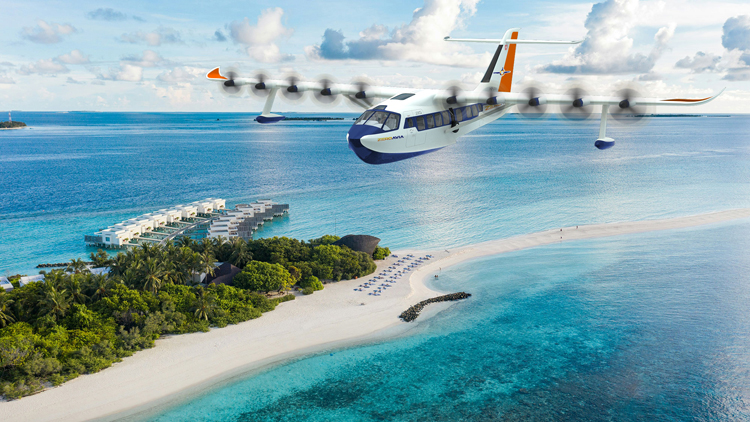
INDIAN ARMED FORCES CHIEFS ON
OUR RELENTLESS AND FOCUSED PUBLISHING EFFORTS

SP Guide Publications puts forth a well compiled articulation of issues, pursuits and accomplishments of the Indian Army, over the years

I am confident that SP Guide Publications would continue to inform, inspire and influence.

My compliments to SP Guide Publications for informative and credible reportage on contemporary aerospace issues over the past six decades.
- Rajnath Singh assumes charge as Defence Minister for the second consecutive term
- Interim Defence Budget 2024-25 — An Analysis
- Union Defence budget 2024
- Prime Minister Modi Flies in the LCA Tejas
- New Chapter in India-Italy Defence Ties
- Airpower beyond Boundaries
- Full address by Air Chief Marshal V.R. Chaudhari, Chief of the Air Staff
JEKTA and ZeroAvia to partner on hydrogen-electric amphibious aircraft

JEKTA, the Switzerland-based developer of the zero-emissions PHA-ZE 100 amphibious aircraft, today announced that it has selected ZeroAvia's fuel cell power generation system (PGS) technology to demonstrate the concept of a fuel cell variant of its electric amphibious flying boat. The system will be line-fitted as the PHA-ZE 100 hydrogen variant comes to market.
While battery technology continues evolving, JEKTA is committed to exploring all potential options that will increase the range and payload of the aircraft. Powered by ZeroAvia's fuel cell PGS, it is anticipated the PHA-ZE 100 will achieve a range of up to 500km or 600km and increase the payload by up to one tonne, adding even more capability to the airframe. Operating and maintenance costs can also be lowered with a hydrogen fuel system supporting a life of up to 20,000 hours. Through close cooperation, JEKTA and ZeroAvia will develop and certify an integrated PGS, including inverters, other electronic components, and a hydrogen tank and fuel system.
"By working with ZeroAvia and defining a suitable fuel cell system, we can offer our potential operator clients the choice of two fuel sources. The hydrogen system delivers a viable alternative to electric battery power that promises a significant increase in the range of our PHA-ZE 100, which will suit operators serving longer regional routes. In contrast, the battery power option will suit shorter-range missions and operators flying in locations where electric power is more cost-effective and accessible," says George Alafinov, CEO of JEKTA Switzerland. "ZeroAvia holds a strong market position with secure financing, an impressive set of customer commitments and well-developed infrastructure, which all contributed to our decision to work with them."

ZeroAvia is already flying a prototype of its entire hydrogen-electric powertrain (ZA600) in a 19-seat testbed aircraft. It has developed a range of flexible low-temperature proton exchange membrane (LTPEM) PGS solutions and novel high-temperature PEM (HTPEM) fuel cells for hydrogen-electric aerospace applications.
"The JEKTA team shares our vision of introducing clean aircraft propulsion systems into commercial operations. We are noting a resurgence in the seaplane market, and we're excited to work with an innovative company that is leading and shaping the future of amphibious aviation. We see the huge potential for creating zero-emission amphibious flights, and we believe hydrogen-electric propulsion will play a big role in this market," says Val Miftakhov, CEO at ZeroAvia.
ZeroAvia is also involved in global hydrogen infrastructure projects and has partnerships with nearly 20 airports to explore the concept of operations and the hydrogen refuelling ecosystem required to support route adoption. The company has also pioneered the testing of electrolyzers for on-site hydrogen generation, hydrogen pipeline technology and aircraft refuelling equipment in an airport environment. Alafinov sees these as essential components supporting an efficient regional amphibious aviation network and plans to work closely with ZeroAvia on both an optimized installation of their PGS in the PHA-ZE 100 and in exploring the infrastructure development with operator customers.





